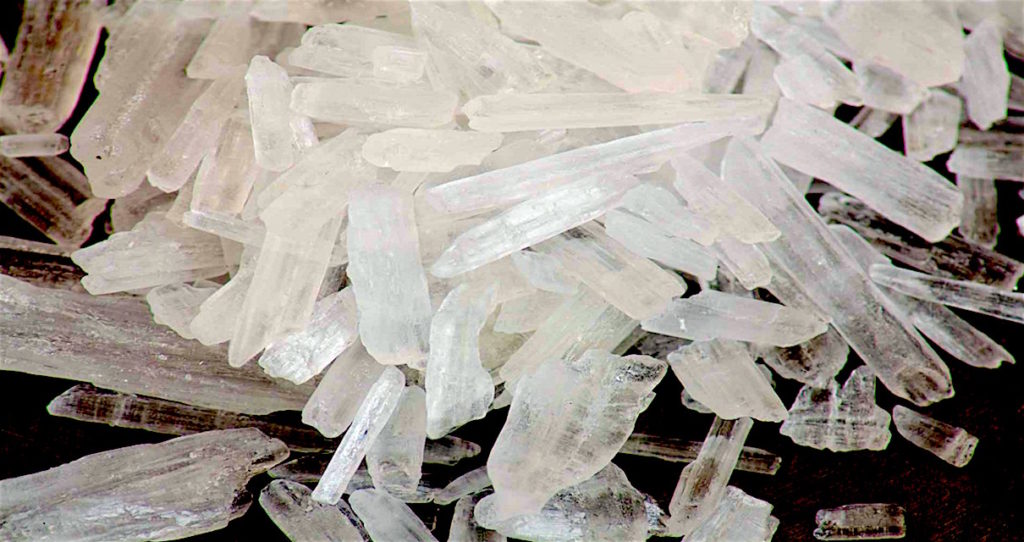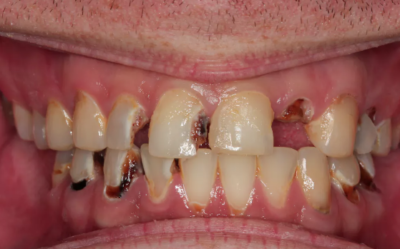Read the latest and greatest from our team
of incredible specialists.

Beach House Recovery Center » Blog » Methamphetamine Abuse, Side Effects & Treatment Tips
Methamphetamine (meth) is a powerful stimulant drug that is highly addictive and can have damaging effects on the central nervous system. It has very few legal medical uses, including the treatment of attention deficit hyperactivity disorder (ADHD) and as a short-term aspect of weight loss treatments. In fact, there is only one prescription drug on the market with methamphetamine (Desoxyn).
Methamphetamine is also known by street names such as “crystal meth,” “speed,” “ice,” “tina,” “crystal,” “white,” “junk,” “zoom,” “glass,” “skank,” “scanti,” or “crank.” Meth is an absolute plague on America and is more deadly than Mers or Ebola.
Crystal meth is one of the most common forms of the drug, and it looks like crystal chunks or shiny blue-white rocks that is usually smoked with a glass pipe.
Meth enters the brain in high doses, creating a greater sense of pleasure and euphoria. It causes increased talkativeness and heightened levels of energy and has a high potential for abuse.

Methamphetamine can be smoked, snorted, injected, or orally ingested. Although smoking or injecting meth causes a more immediate rush, no matter how it’s done, the chemical effects on the brain are potent. The drug causes the release of an abnormally high level of dopamine and norepinephrine which creates a rush and a high that cannot be naturally recreated by the brain.
The euphoria is described as extremely pleasurable but doesn’t last long. Many users will chase that high by continuing to take more and more of the drug, creating an immediate abusive pattern.
Meth is also commonly abused because of its availability and how easy it is to make. Made from inexpensive over-the-counter ingredients like pseudoephedrine that’s found in cold medicine, people can “cook” meth in homemade labs. (Think Breaking Bad.)
The drug is also cheap. Many who make the drug cut or mix it with even less expensive ingredients than pseudoephedrine. Manufacturers will use products like salt, sugar, talcum powder, or even laxatives or antidepressants, to make meth even cheaper to produce. Some even lace it fentanyl, making the drug even more dangerous.
Meth is typically sold in ¼ gram for $20 to $25 and up to 1/8 ounce for $140 to $180, meth is more accessible and much cheaper than cocaine. Narcotic officers have reported that a person can spend $100 for cocaine and get a twenty-minute high from it while for the same amount of money a meth abuser can get high for two or three days. The average high from Crystal Meth lasts between 4-12 hours.
Users who elect to inject meth immediately expose themselves to several deadly risks that include contacting hepatitis B and C, HIV (human immunodeficiency virus), or a host of other blood-borne viruses. Long-term abusers who inject Crystal Meth frequently experience scarred or collapsed veins, abscesses, pneumonia, tuberculosis, kidney or liver disease, or infections of the heart lining and valves.
Just like any addictive drug, the user will develop a tolerance to it. As the user adjusts to the tolerance and uses more and more meth in an attempt to produce the same high as the original hit, the access to the drug combined with its relatively low cost creates a wide open path to addiction.
Even in small doses, methamphetamine can have considerable side effects. As a powerful stimulant, meth can increase activity and decrease appetite. In addition, meth may cause the following short-term side effects:


Some methamphetamine users will purposefully use the drug with other drugs like alcohol, Xanax, Klonopin, morphine, or ecstasy. Doing so can be dangerous and potentially fatal.
Due to meth’s potency (it’s three times as strong as cocaine), an addiction can develop after one use. With a high potential for addiction or at least multiple uses, the side effects begin to unfold relatively quickly.

Crystal meth now rivals cocaine as the go-to drug of choice in many parts of the United States. Unlike cocaine, meth doesn’t need to be smuggled into the United States from Mexico or Canada, or even by sea. Meth costs less, produces similar effects, and it can be made in people’s homes with ingredients you could find under your kitchen sink. The Federal Government recently reported, “While cocaine use continues to slow, meth has taken its place as the most widely abused drug in the United States. At the same time, the U.S. Department of Justice has named meth the ‘drug of choice’ among youth.”
The United Nations Office on Drugs and Crime estimated the worldwide production of amphetamine-type stimulants, which includes methamphetamine, at nearly 500 metric tons a year, with 24.7 million abusers.
In the United States, the percentage of drug addiction treatment admissions due to methamphetamine and amphetamine abuse tripled from 3% in 1996 to 9% in 2006. Some states throughout the country have much higher percentages, such as Hawaii, where 48% of the people seeking help for drug or alcohol abuse in 2007 were methamphetamine users.
If you think you or someone you know may have a methamphetamine abuse issue or addition, know that you’re not alone. Meth is one of the most abused drugs in the United States. Please do not try to treat the issue on your own. Behavioral therapies, as well as contingency management interventions, have shown to be effective in reducing methamphetamine abuse. There is professional help that specializes in these areas as well as the general field of meth abuse. Trained counselors and drug rehab treatment programs can help with the physical and psychological components of rehabilitation. The most important thing to know is that there is help available, and the best time to reach for help is now.
You can speak with a meth addiction treatment expert confidentially 24/7 if you Contact Beach House today.
Whether you’re researching for yourself or a loved one, Beach House can help. We understand that this is a serious time in your life and that the treatment center you choose matters. We want you to feel comfortable and empowered to make the right decision for yourself, a friend, or a family member. This is why a counselor is waiting and available to answer your questions and help put your mind at ease regarding the next steps. Many of the staff at Beach House have walked in your shoes. If you feel you’re ready or want more information about how to help a loved one, we can help today. You can also learn why we are voted the #1 rehab for addiction treatment in Florida.
We accept most major insurance plans and can verify your benefits quickly and confidentially.
We’re committed to helping you access the care you need, our admissions counselors can guide you through your coverage options and available resources.





"*" indicates required fields